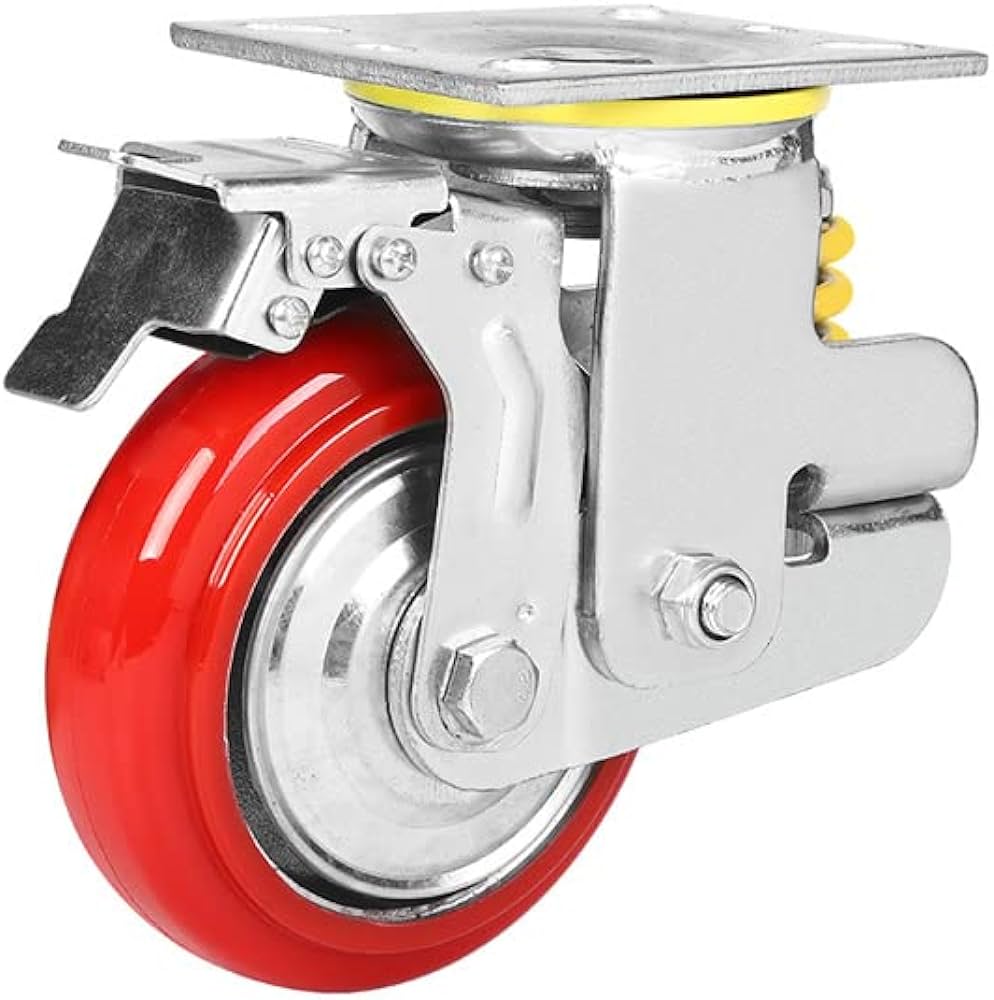Suspension casters have an independent suspension system that allows them to absorb shock and vibration during movement. This feature makes them ideal for use in industrial applications with dynamic loads.
However, determining the best type of caster for your equipment requires considering a few key factors. These include cost, durability, safety, and swivel radius.
Cost-Effectiveness
Adding suspension casters reduces your cart’s un-sprung weight, which can add up to hundreds in reduced maintenance costs over the life of your equipment. This is due to the reduction of components like axles, wheel hubs, and control arms that can often need routine attention or replacement.
Suspension casters are also a more cost-effective choice over pneumatic casters for carts that need to move over rough terrain or indoor surfaces. Their ability to absorb shock and vibration during movement also saves you money on repairs, as they protect your cart and the surface underneath it from damage and wear.
Another critical factor when choosing suitable casters is considering your facility’s requirements and the conditions where you’ll use them. For example, select a model with high load capacity and low rolling resistance if you need your carts to roll over enormous, rugged obstacles. In contrast, if you move carts through office spaces and other clean environments, you should opt for lower load capacities and higher rolling resistance.
Durability
Whether they are positioned on carts or dollies that transport equipment and machinery in warehouses, airports, manufacturing facilities, or other work environments, shock-absorbing casters can help protect delicate payloads from damage during transportation. This is because they offer a smooth ride, reducing vibration and preventing static electricity buildup on the floor.
However, these casters must be chosen carefully to achieve maximum durability in an operation. This includes evaluating the load capacity, loading frequency, and environmental conditions. For instance, selecting a dependent suspension with a custom bolt-hole pattern can add to the cost of casters.
Knowing how much initial force will be required to initiate a spring deflection. Choosing a shock-absorbing caster with an inappropriate initial force can damage the equipment, as well as costly repairs and periods of downtime. A skilled caster professional can advise clients on the appropriate initial force for their applications. This can be determined through static and dynamic load/deflection testing.
Safety
Like all equipment, casters have limits, especially when subjected to sudden forces and shock loading. These forces can damage the casters and impact cart performance, resulting in lower efficiency and compromised safety.
Fortunately, there are ways to prevent these stresses and protect your equipment from shock-related damage. Regular maintenance is crucial; keeping the wheels clean can reduce wear and tear. Similarly, properly lubricating your casters can help them resist impacts and maintain functionality longer.
The type of caster you select can also make a big difference. Suspension casters can withstand more frequent and heavier-duty usage than spring-loaded casters, making them ideal for round-the-clock operations. You can also choose extra-heavy-duty casters for environments that require effective shock absorption and vibration dampening. These casters are designed with reinforced steel frames and more prominent kingpins than medium-duty casters to handle more shock and impact.
Customization
Adding components like wheel brakes, swivel locks, or toe guards to a suspension caster adds to the overall cost of the caster. However, this is usually only true when the customization is significant. Otherwise, an elemental caster can be configured to meet many of the exact requirements at a fraction of the cost.
The caster’s weight capacity and the nature of the environment also significantly impact pricing. For example, a suspension caster with a long swivel lead is ideal for equipment with a stable load that requires minimal shock absorption on flat or moderately rough surfaces.
In addition, modern suspension casters have smart-designed wheels that reduce initial, continuous, and turning force. This helps to prevent the overexertion that contributes to excessive pain and spasms experienced by wheelchair users. The pneumatic suspension caster fork also lessens the stresses transmitted through the wheelchair frame and seat cushion. This allows the user to travel with greater comfort and efficiency.

